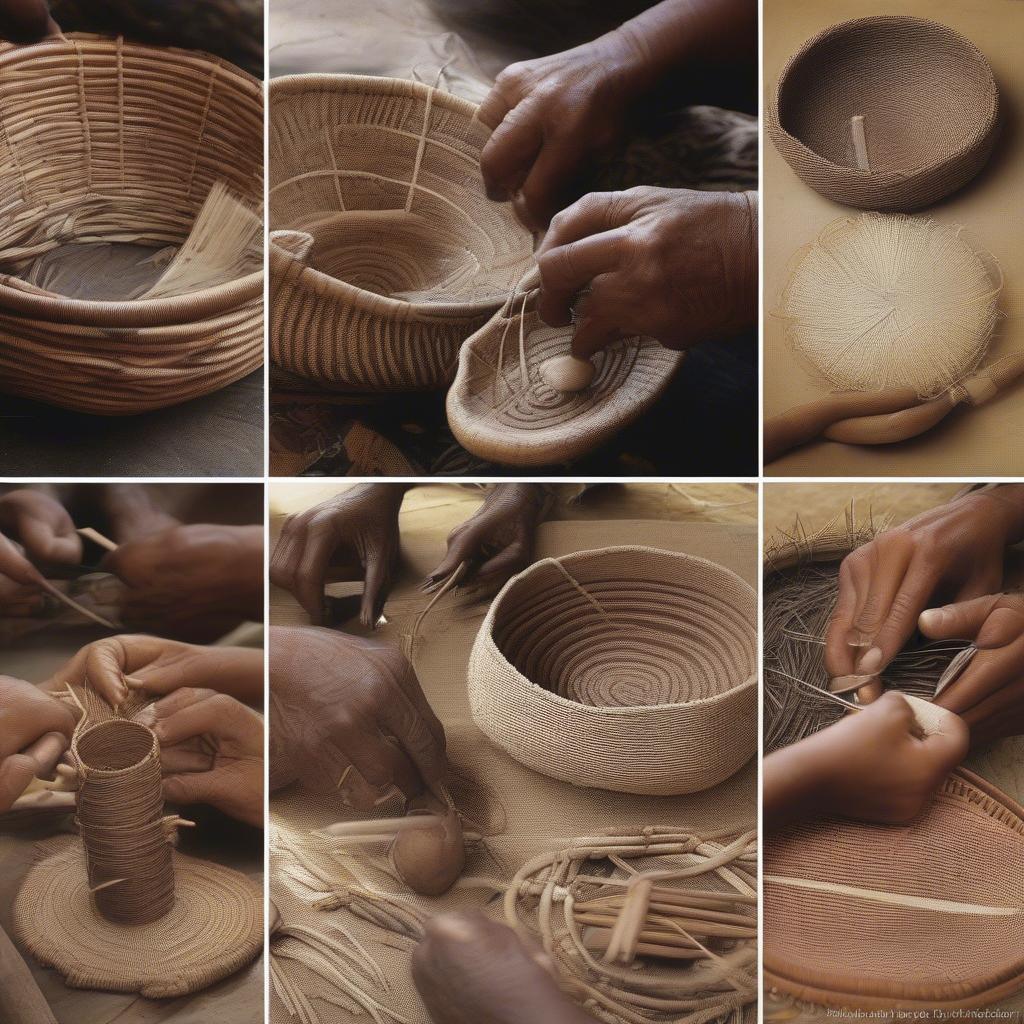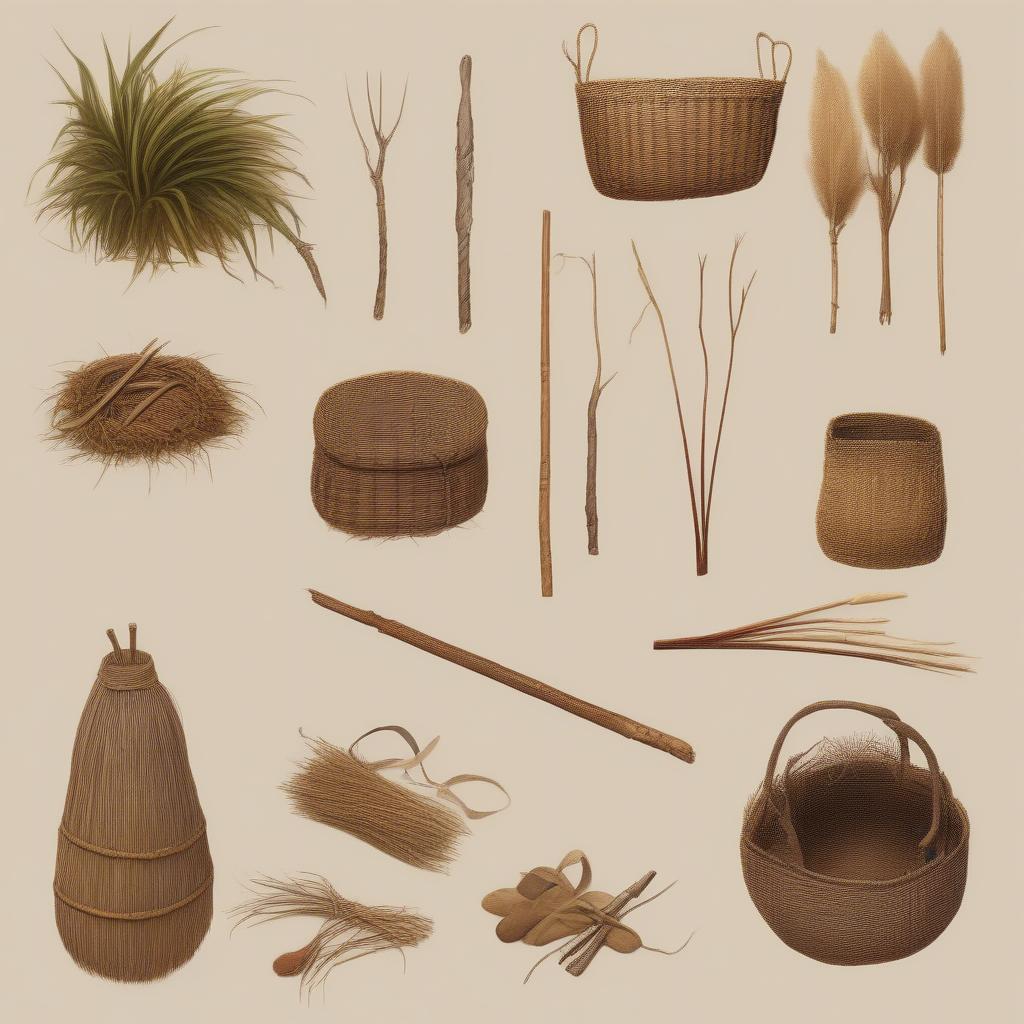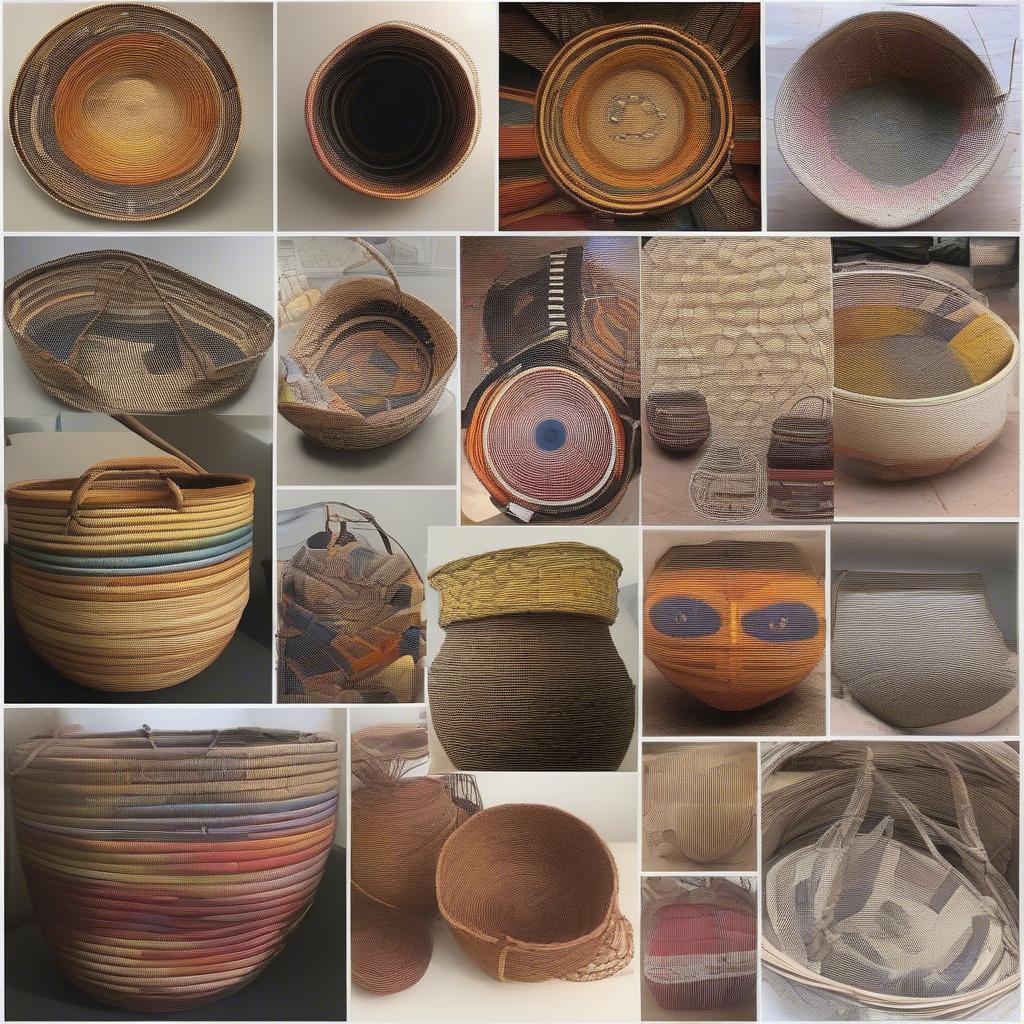Basket Weaving
Aboriginal Basket Weaving History: A Journey Through Time
Aboriginal Basket Weaving History is a rich tapestry woven with cultural significance, resourcefulness, and artistic expression. For millennia, Aboriginal peoples across Australia have practiced basket weaving, not merely as a craft, but as an integral part of their daily lives, ceremonies, and storytelling. These baskets are more than just containers; they are vessels of tradition, connecting generations and embodying a deep connection to the land.
 Traditional Aboriginal Basket Weaving Techniques in Australia
Traditional Aboriginal Basket Weaving Techniques in Australia
The Significance of Aboriginal Basket Weaving
Aboriginal basket weaving is deeply embedded within the cultural fabric of different Aboriginal communities across Australia. Baskets serve a multitude of purposes, from practical uses like carrying food and water to ceremonial objects used in important rituals. The knowledge and skills of basket weaving are passed down through generations, ensuring the continuation of these traditions. Many baskets also incorporate intricate designs and patterns that tell stories, depict important figures, or represent elements of the natural world, making each basket a unique work of art. These beautiful baskets serve as powerful symbols of cultural identity and heritage.
Did you know that different regions in Australia have unique basket weaving styles and materials? Learn more about cane basket weaving australia.
Exploring Aboriginal Basket Weaving Materials
Traditionally, Aboriginal basket weavers utilize readily available natural materials found in their local environment. These materials vary depending on the region and can include grasses, bark, vines, roots, and even animal hair. For example, in some areas, the flexible leaves of the pandanus palm are favoured, while in others, the tough bark of the paperbark tree is preferred. The process of gathering and preparing these materials is often as significant as the weaving itself, involving traditional knowledge and a deep respect for the land. The choice of materials and the techniques employed often reflect the unique ecological and cultural landscape of each community.
 Aboriginal Basket Weaving Materials and Tools
Aboriginal Basket Weaving Materials and Tools
What materials are used in Aboriginal basket weaving?
Natural materials like grasses, bark, vines, roots, and sometimes animal hair are commonly used.
Want to learn more about the materials used in Australian basket weaving? Check out this resource on australian basket weaving materials.
A Glimpse into Aboriginal Basket Weaving Techniques
A wide variety of techniques are employed in Aboriginal basket weaving, each contributing to the distinct aesthetic and functionality of the finished product. Coiling, twining, and plaiting are some of the common methods used, often combined to create intricate patterns and textures. The skills required for these techniques are honed over years of practice, passed down through families and communities. The process of creating a basket is often a collaborative effort, involving multiple individuals working together, further strengthening social bonds and cultural continuity.
If you’re in Sydney and interested in learning this ancient craft, consider exploring opportunities to learn basket weaving sydney.
Aboriginal Basket Weaving in the Modern Era
While traditional methods and materials remain central to Aboriginal basket weaving, contemporary artists are also exploring new avenues of expression. Some artists are incorporating modern materials or experimenting with new designs while still adhering to the core principles of their cultural heritage. This evolution allows the tradition to remain vibrant and relevant in the modern world, reaching new audiences and ensuring the continued appreciation of this ancient art form.
 Contemporary Aboriginal Basket Weaving in Australia
Contemporary Aboriginal Basket Weaving in Australia
How has Aboriginal basket weaving evolved?
Contemporary artists are now incorporating modern materials and designs while still upholding traditional values.
Did you know there’s a beautiful folk song about a basket weaver? Listen to the basket weaver song.
The Future of Aboriginal Basket Weaving
Aboriginal basket weaving continues to thrive as a testament to the resilience and creativity of Indigenous cultures. Through workshops, exhibitions, and educational programs, knowledge and skills are being shared with younger generations, ensuring the survival of this rich tradition. The growing appreciation for handcrafted items and the increasing awareness of cultural heritage are contributing to a renewed interest in Aboriginal basket weaving, both within Australia and internationally. By supporting Aboriginal artists and promoting their work, we can help ensure that this vital cultural expression continues to flourish for generations to come.
For more in-depth information on traditional techniques, explore this article on traditional aboriginal basket weaving.
In conclusion, aboriginal basket weaving history is a vibrant and ongoing narrative, woven with threads of tradition, artistry, and cultural significance. These baskets are not just objects; they are living expressions of Aboriginal culture, connecting the past to the present and carrying the stories of the land and its people.
FAQ
-
What is the significance of Aboriginal basket weaving? It’s a vital part of their culture, used for practical purposes, ceremonies, and storytelling.
-
What materials are used in traditional Aboriginal basket weaving? Natural materials such as grasses, bark, vines, roots, and sometimes animal hair are used.
-
How are Aboriginal basket weaving techniques passed down? Through generations, within families and communities.
-
How has Aboriginal basket weaving adapted to the modern era? Contemporary artists are incorporating modern materials and designs while respecting traditional values.
-
Why is it important to support Aboriginal basket weavers? To ensure the continuation of this rich cultural tradition and support Indigenous artists.
If you need further assistance, please contact us at Hanoi, Vietnam or Tech Avenue, Suite 12, San Francisco, CA 94105, USA. We have a 24/7 customer service team.
